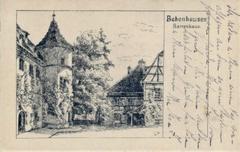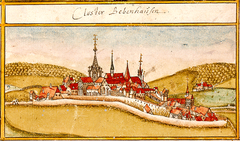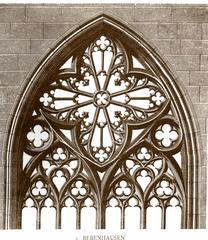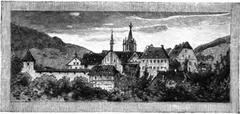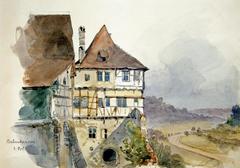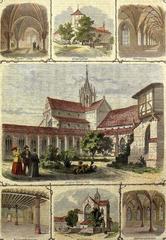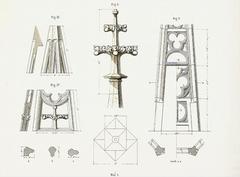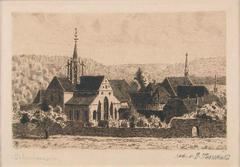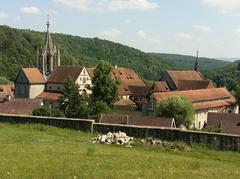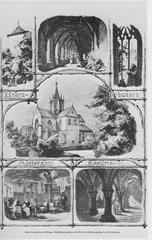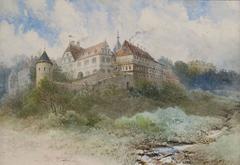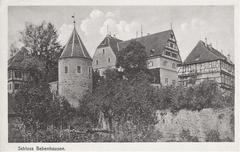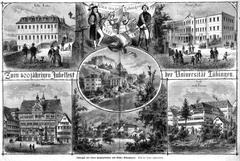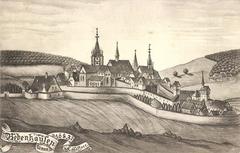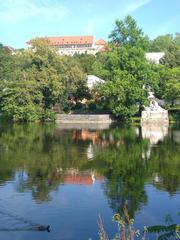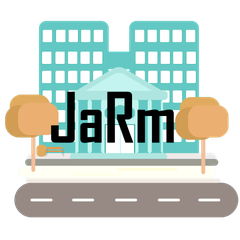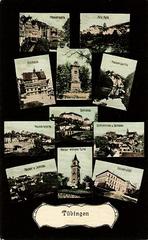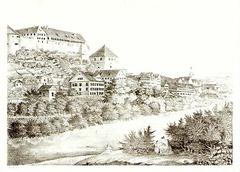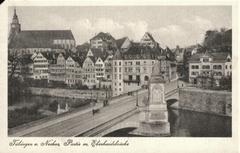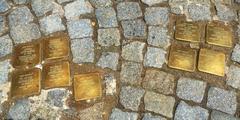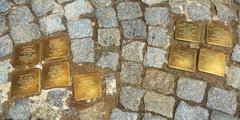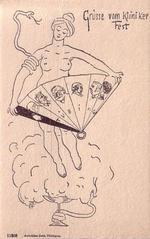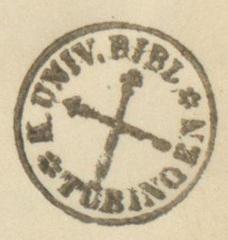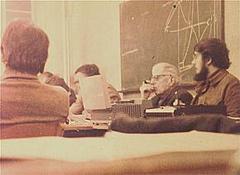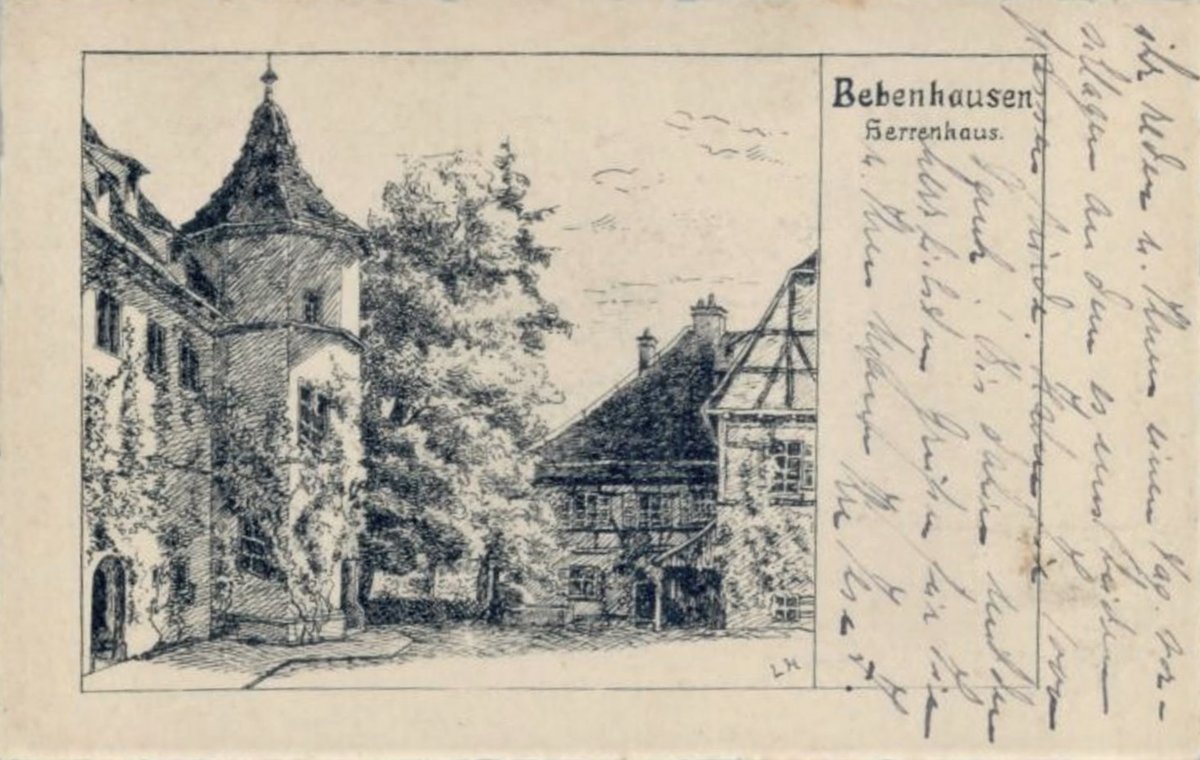
Bebenhausen Abbey Visiting Hours, Tickets, and Travel Guide – Tübingen’s Historical Masterpiece
Date: 14/06/2025
Introduction
Bebenhausen Abbey, nestled within the tranquil Schönbuch Nature Reserve just north of Tübingen, Germany, is a remarkable testament to centuries of spiritual devotion, royal heritage, and architectural splendor. Founded in the late 12th century by Rudolf, Count Palatine of Tübingen, the abbey began as a Cistercian monastery and evolved through dramatic religious, political, and cultural transformations. Today, it stands as one of the premier historical sites in Tübingen, inviting visitors to explore its layered past, stunning architecture, and natural surroundings (Kloster Bebenhausen official site; Places of Germany).
This comprehensive guide provides all essential information for planning your visit: current opening hours, ticket prices, accessibility, travel tips, highlights of the abbey and palace, and suggestions for making the most of your day in this unique corner of southern Germany.
Table of Contents
- History and Cultural Significance
- Visiting Bebenhausen Abbey
- Highlights and What to See
- Visitor Amenities
- Photography and Events
- Practical Travel Tips
- Frequently Asked Questions
- Conclusion
- References and Further Reading
History and Cultural Significance
Founding and Cistercian Era
Bebenhausen Abbey was established between 1180 and 1183, initially by the Premonstratensians and then quickly taken over by the Cistercian Order in 1190. The Cistercians’ devotion to simplicity, community, and manual labor shaped the abbey’s early architectural style, with restrained Romanesque features gradually giving way to elegant Gothic forms. At its zenith, the abbey housed around 80 monks and 130 lay brothers, becoming a major religious, cultural, and economic force in the region (Kloster Bebenhausen official site; Monumentflyer Bebenhausen).
Reformation and Secularization
The Protestant Reformation swept through Württemberg in the 16th century, and by 1534, Bebenhausen Abbey was secularized. The monastic community was dispersed, and by 1560, the complex was repurposed as a Protestant boarding school. Though the monastic era ended in 1648, much of the medieval architecture survived, preserving the abbey’s spiritual atmosphere (Places of Germany).
Royal Transformation
In 1807, the abbey became property of the Kingdom of Württemberg during the secularization of church lands. The former abbot’s house was transformed into a royal hunting lodge, or Jagdschloss, and the interiors underwent 19th-century renovations in Historicist and Renaissance styles. The palace became a favored residence for royal hunting parties and, after 1918, housed the last royal couple of Württemberg, King Wilhelm II and Queen Charlotte (Kloster Bebenhausen official site).
Modern Era and Restoration
After WWII, Bebenhausen briefly hosted the regional parliament of Württemberg-Hohenzollern, symbolizing democratic renewal. Ongoing preservation efforts have maintained the site as one of the best-preserved Cistercian abbeys in southern Germany, integrating original medieval features with sensitive restoration (Monumentflyer Bebenhausen).
Visiting Bebenhausen Abbey
Opening Hours
- April to October: Tuesday to Sunday, 10:00 AM – 5:00 PM
- November to March: Tuesday to Sunday, 10:00 AM – 4:00 PM
- Closed on Mondays and public holidays
- For the latest updates and special event hours, consult the official Bebenhausen website.
Tickets and Guided Tours
- Standard Admission: €7–€9 (adults); reduced rates for students, seniors, and groups
- Children: Under 6 free
- Combined Tickets: Available for both abbey and palace museum
- Guided Tours: Offered in German (with some English options) for an additional fee. Advance booking is recommended for guided and special theme tours (Kloster Bebenhausen official site).
- Schlosscard: Valid for Bebenhausen and 23 other regional sites
Tickets can be purchased onsite or online via the official website to avoid waiting in line.
Getting There
- By Bus: From Tübingen ZOB (central bus station), take lines 826 or 828 to “Bebenhausen Kloster.” The journey takes roughly 12–15 minutes (My Germany Vacation).
- By Car: 10–15 minutes from Tübingen city center; free parking is available near the village.
- On Foot or Bike: Enjoy scenic trails through Schönbuch Forest connecting Tübingen and Bebenhausen.
Accessibility
- Most public areas are wheelchair accessible, but some historic sections have uneven surfaces or steps. Contact the visitor center for detailed accessibility support (Kloster Bebenhausen official site).
Highlights and What to See
- Abbey Church: Marvel at the blend of Romanesque and Gothic architecture and the serene atmosphere of this former monastic heart.
- Summer Refectory: Admire the fan-vaulted ceiling, a masterpiece of Gothic design.
- Cloisters and Monastic Buildings: Explore the chapter house, dormitory, and refectory, all rich in history and atmosphere.
- Palace Museum: Discover the royal apartments, hunting trophies, and early 20th-century royal amenities.
- Village of Bebenhausen: Stroll through picturesque half-timbered houses and cobblestone streets.
- Schönbuch Nature Reserve: Take advantage of well-marked walking and hiking trails for a nature-filled complement to your visit (Tübingen city site).
Visitor Amenities
- Visitor Center: Provides maps, brochures, and multilingual assistance.
- Restrooms: Modern facilities on-site.
- Café: Enjoy coffee, cakes, and light meals.
- Gift Shop: Browse books, postcards, and local products, including honey and herbal teas.
- Parking: Free lot outside the village.
Photography and Events
- Photography: Non-flash photography for personal use is allowed in most areas. For tripods or commercial photography, request permission in advance.
- Events: The abbey regularly hosts classical concerts, lectures, and themed tours. Check the events page for details.
- Workshops: Family-friendly workshops and educational programs are available during school holidays.
Practical Travel Tips
- Language: German is spoken, but English is widely understood at the visitor center.
- Payments: Credit cards are increasingly accepted, but bring some cash for small purchases.
- Duration: Plan for 2–3 hours to explore the abbey, palace, village, and trails.
- Dress: Wear comfortable shoes and bring a layer for cool stone interiors.
- Best Time to Visit: Weekday mornings in spring or autumn are quietest and most pleasant.
Frequently Asked Questions
Q: What are Bebenhausen Abbey’s opening hours?
A: Tuesday to Sunday, 10:00–17:00 (April–October), 10:00–16:00 (November–March). Closed Mondays.
Q: How much are tickets?
A: Adult admission is €7–€9; reduced rates for students, seniors, and groups. Children under 6 enter free.
Q: Are guided tours available?
A: Yes, regular tours are available (mainly in German), with some English-language options.
Q: Is the site accessible for wheelchairs?
A: Most areas are accessible; contact the visitor center for details.
Q: Can I take photos inside?
A: Non-flash photography is permitted for personal use.
Q: What else can I see nearby?
A: Combine your visit with Tübingen’s Old Town, Hohenzollern Castle, or regional nature trails.
Conclusion
Bebenhausen Abbey offers an immersive journey through eight centuries of religious, royal, and cultural history—set in the heart of one of Germany’s most beautiful nature reserves. With its stunning architecture, preserved interiors, and tranquil landscape, it stands as a must-visit for anyone exploring Tübingen or Baden-Württemberg.
For up-to-date visiting hours, ticket prices, and event information, always consult the official Bebenhausen Abbey website. Enhance your experience by downloading the Audiala app for expert audio guides, and explore related posts on Tübingen’s rich heritage.
References and Further Reading
- Kloster Bebenhausen official site
- Places of Germany
- Monumentflyer Bebenhausen
- Military in Germany
- Lonely Planet
- Tübingen city site
- Kloster Bebenhausen – Digital Experience
- My Germany Vacation
- Touristplaces.guide
